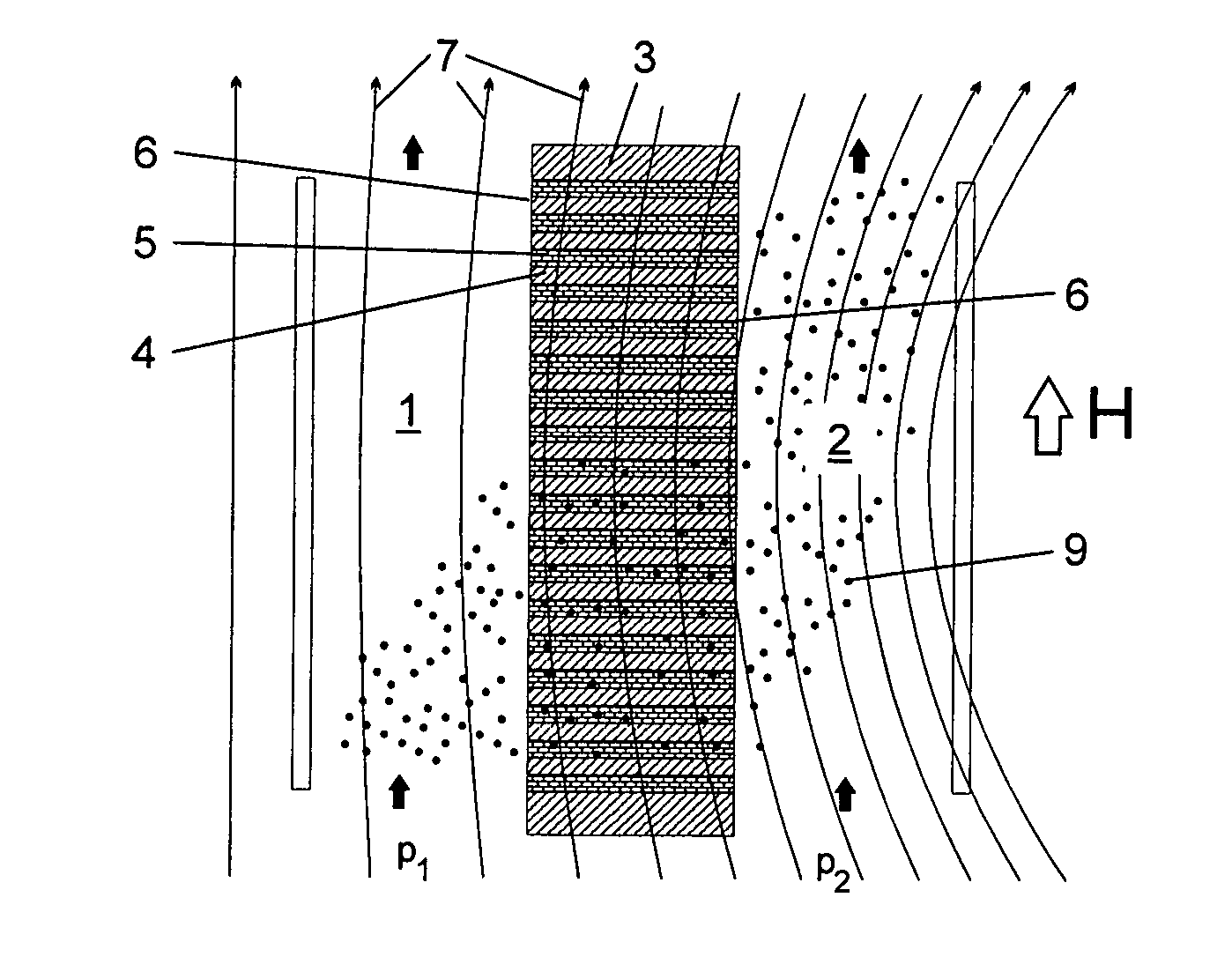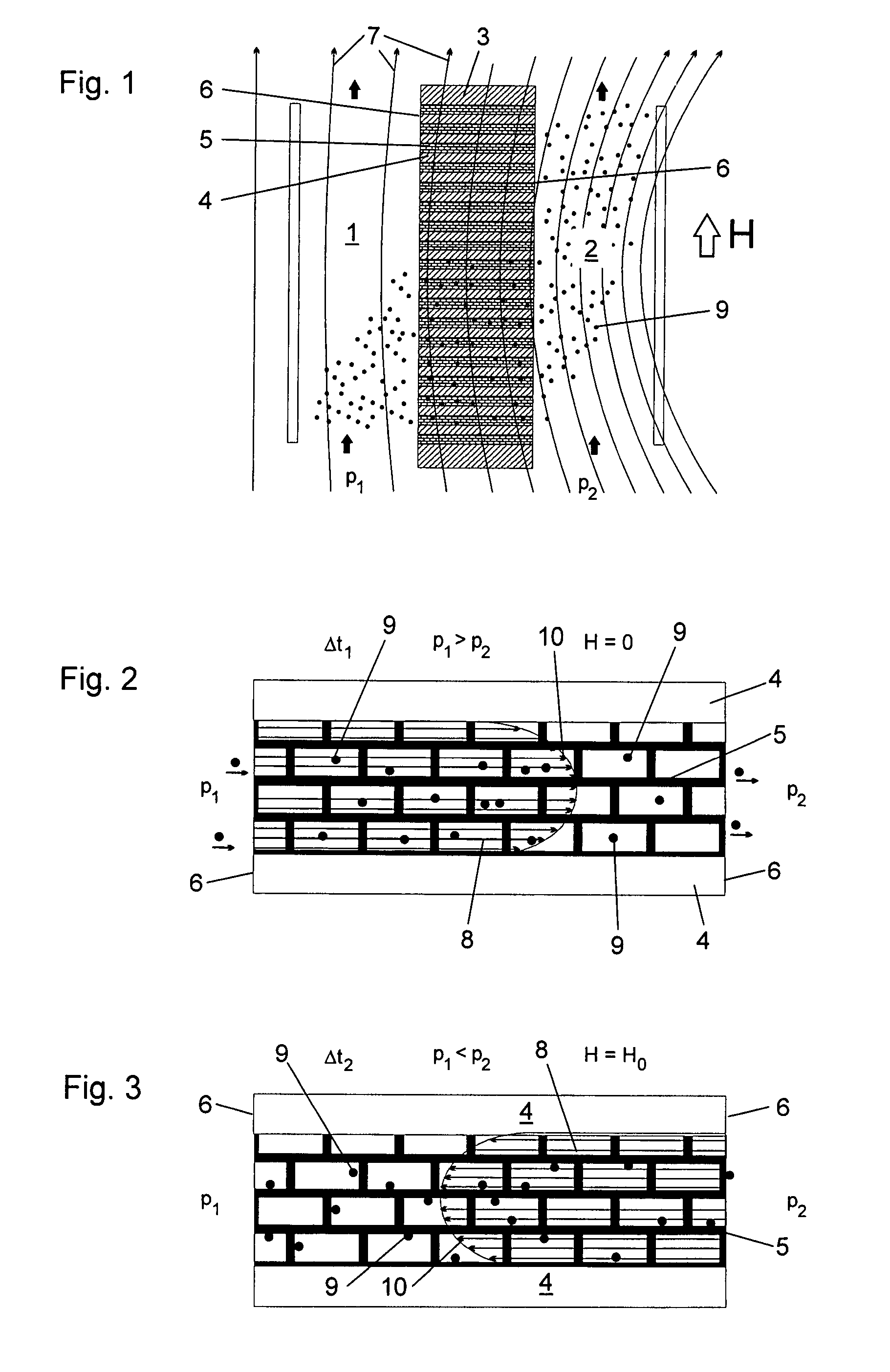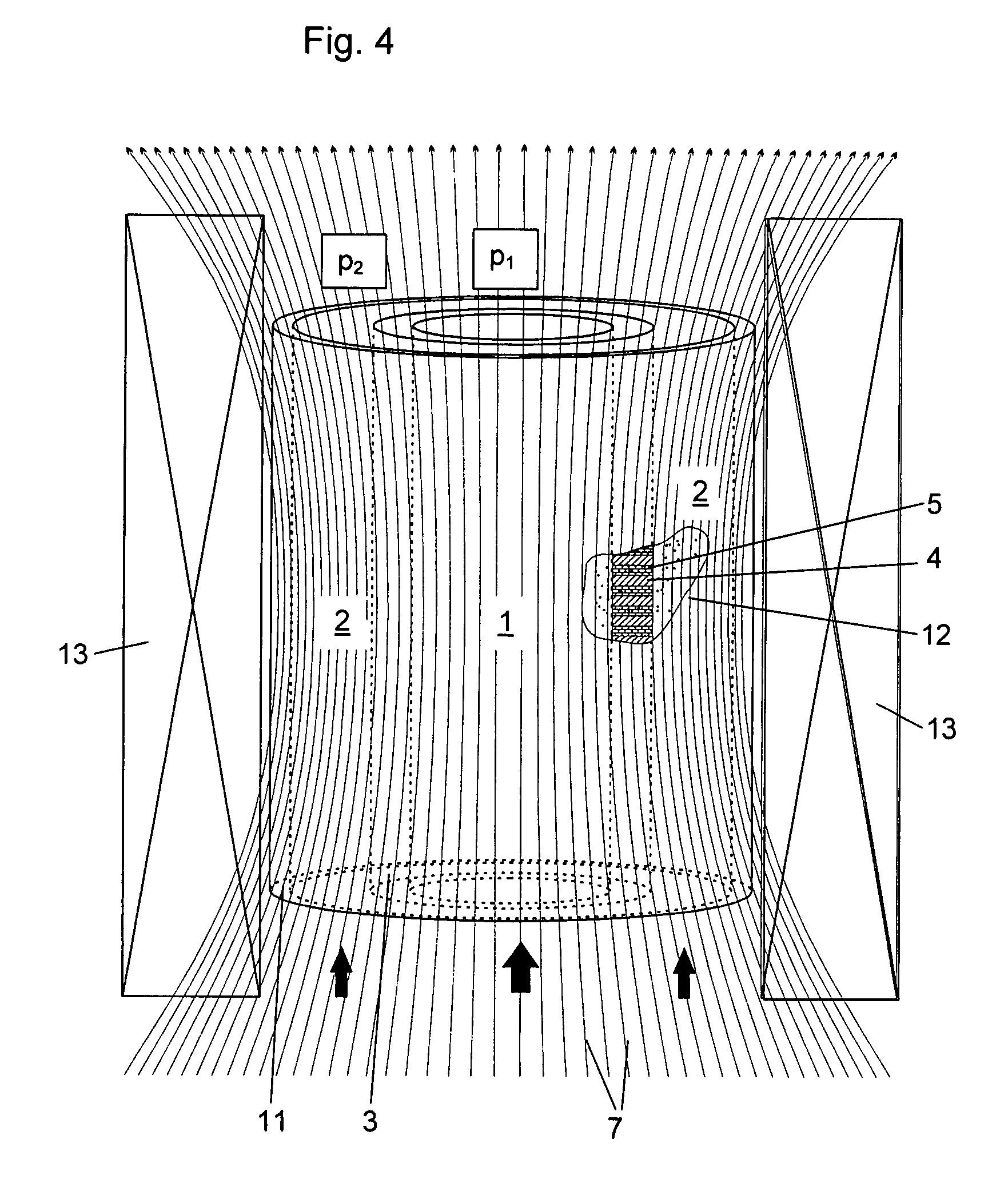Semipermeable membrane system for magnetic particle fractions
a magnetic particle and membrane technology, applied in the direction of magnetic separation, separation process, filtration separation, etc., can solve the problems of limiting the use possibilities of a technical endosmosis to certain material groups, requiring a cyclic discontinuous operation, and reaching the binding capacity limit relatively quickly
- Summary
- Abstract
- Description
- Claims
- Application Information
AI Technical Summary
Benefits of technology
Problems solved by technology
Method used
Image
Examples
Embodiment Construction
[0039]FIG. 1 shows schematically in a cross-sectional view the essential components of a first embodiment with a plate-shaped membrane 3 forming a separation wall between two fluids 1 and 2 which are moved parallel to the membrane and have pressures P1 and, respectively, P2. The membrane comprises a sandwich structure consisting of alternate layers of a ferromagnetic solid material 4 and layers of a ferromagnetic wire web 5. The layers mentioned extend orthogonally with respect to the two membrane surfaces 6. The open spaces in the wire mesh provide the micro-fluidic channels forming the fluid passages between the two membrane surfaces. The lateral dimension of the layers, particularly of the ferromagnetic web 5 between the membrane surfaces 6 herein is a multiple of its thickness or, respectively, height. The whole magnet membrane additionally stands under the influence of a switchable magnetic field indicated in FIG. 1 by the magnetic field lines 7 (magnetic field strength H). Not...
PUM
| Property | Measurement | Unit |
|---|---|---|
| magnetic particle fraction | aaaaa | aaaaa |
| pressure | aaaaa | aaaaa |
| magnetic field | aaaaa | aaaaa |
Abstract
Description
Claims
Application Information
 Login to View More
Login to View More - R&D
- Intellectual Property
- Life Sciences
- Materials
- Tech Scout
- Unparalleled Data Quality
- Higher Quality Content
- 60% Fewer Hallucinations
Browse by: Latest US Patents, China's latest patents, Technical Efficacy Thesaurus, Application Domain, Technology Topic, Popular Technical Reports.
© 2025 PatSnap. All rights reserved.Legal|Privacy policy|Modern Slavery Act Transparency Statement|Sitemap|About US| Contact US: help@patsnap.com



